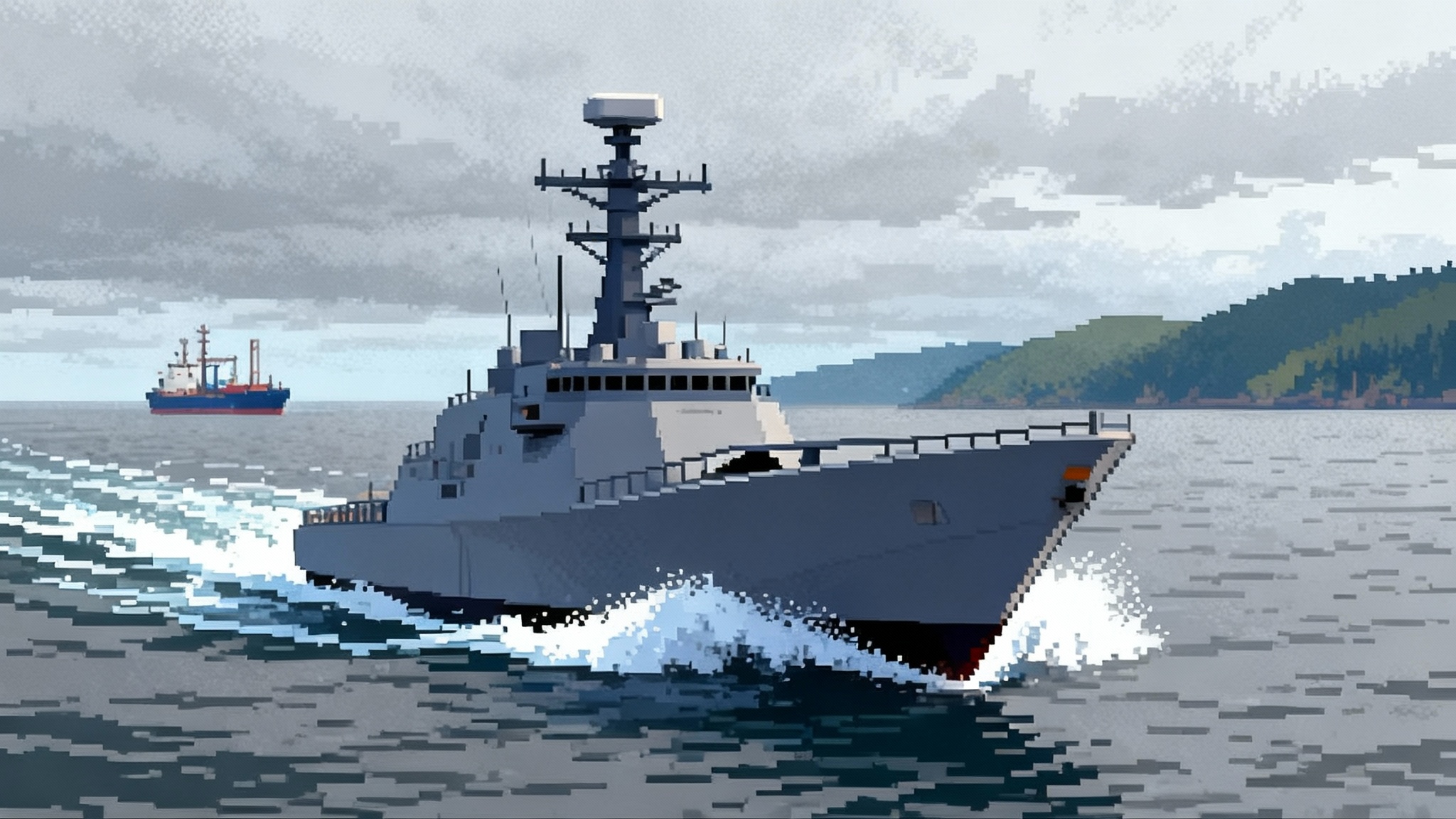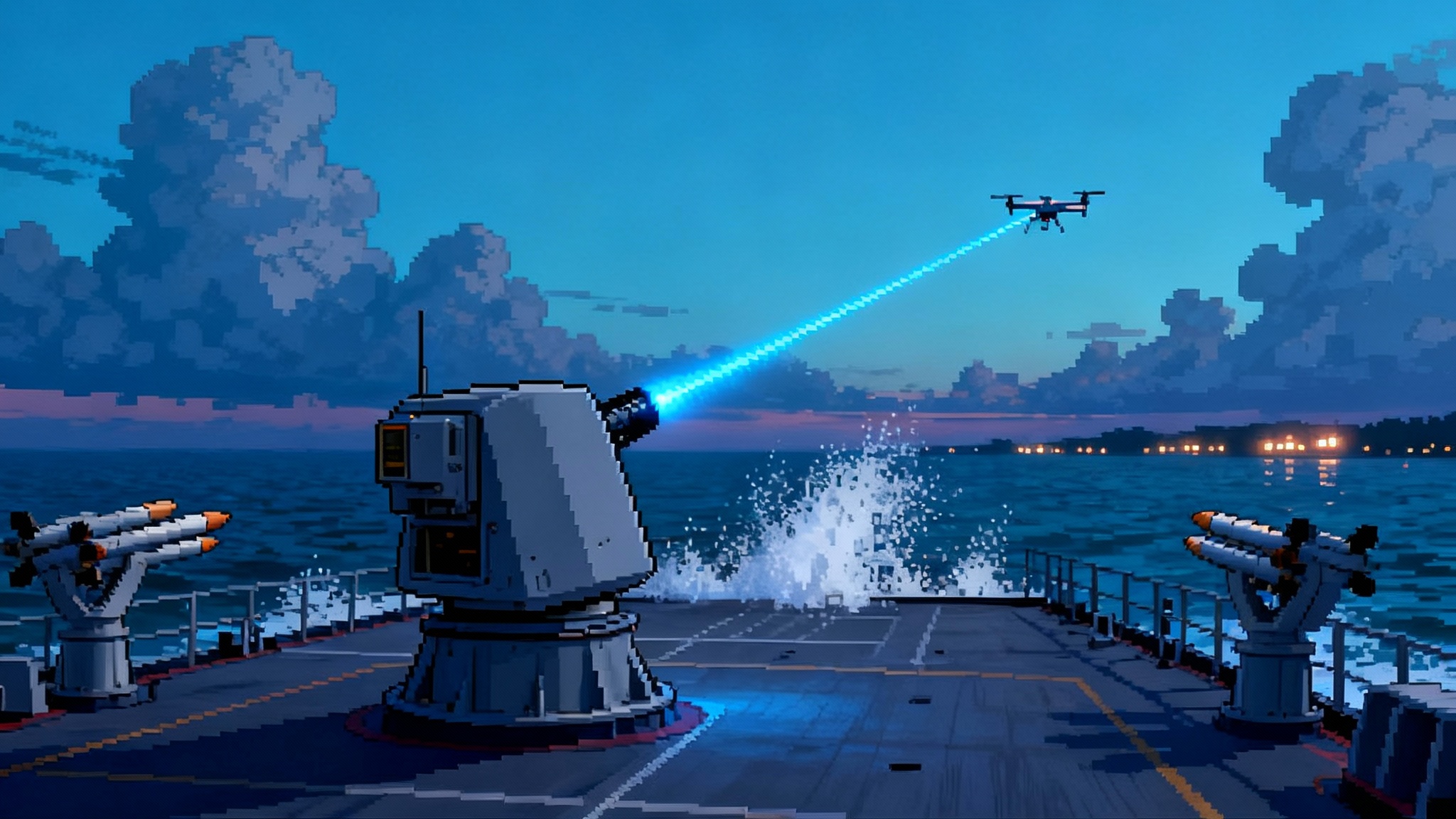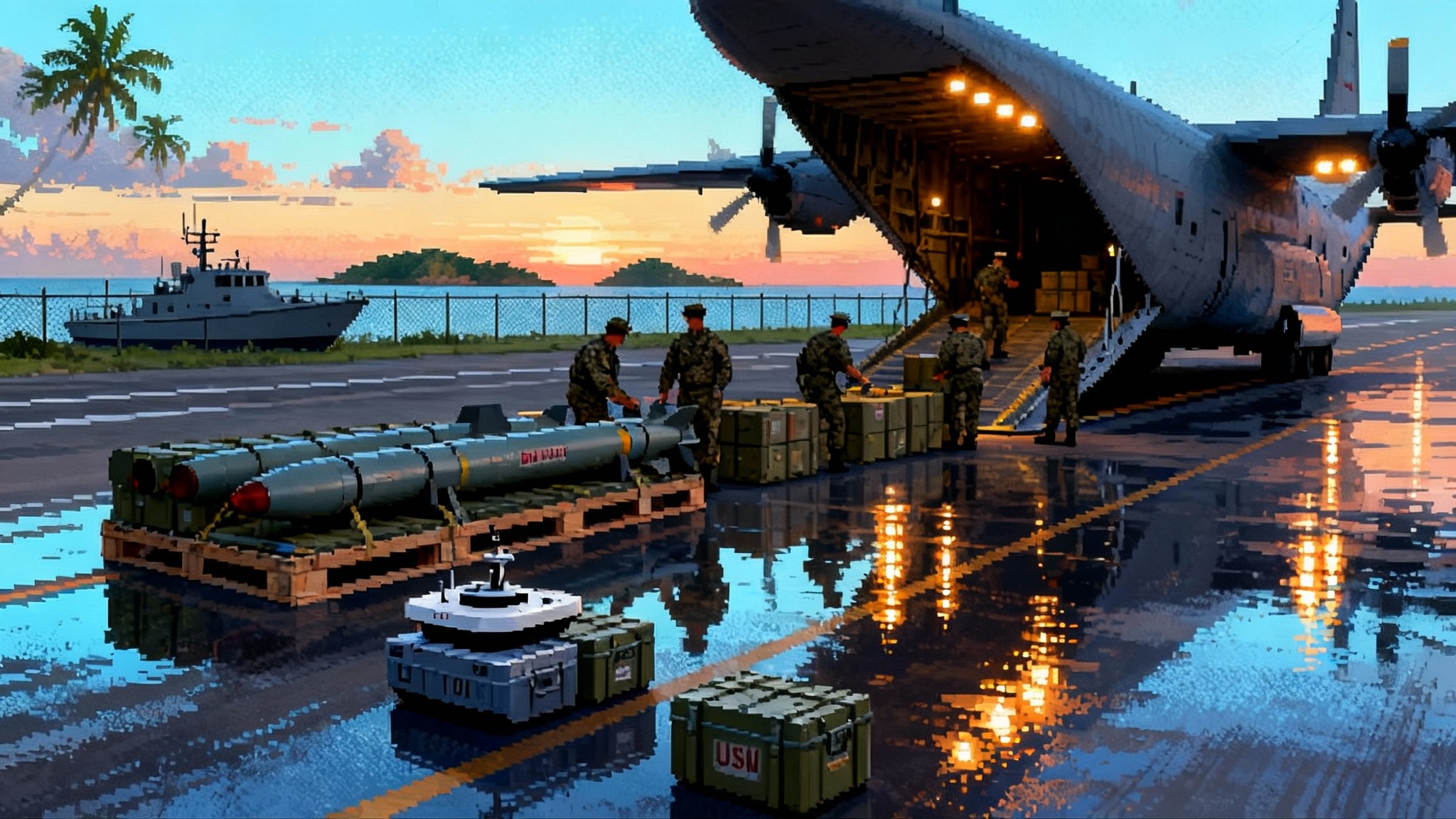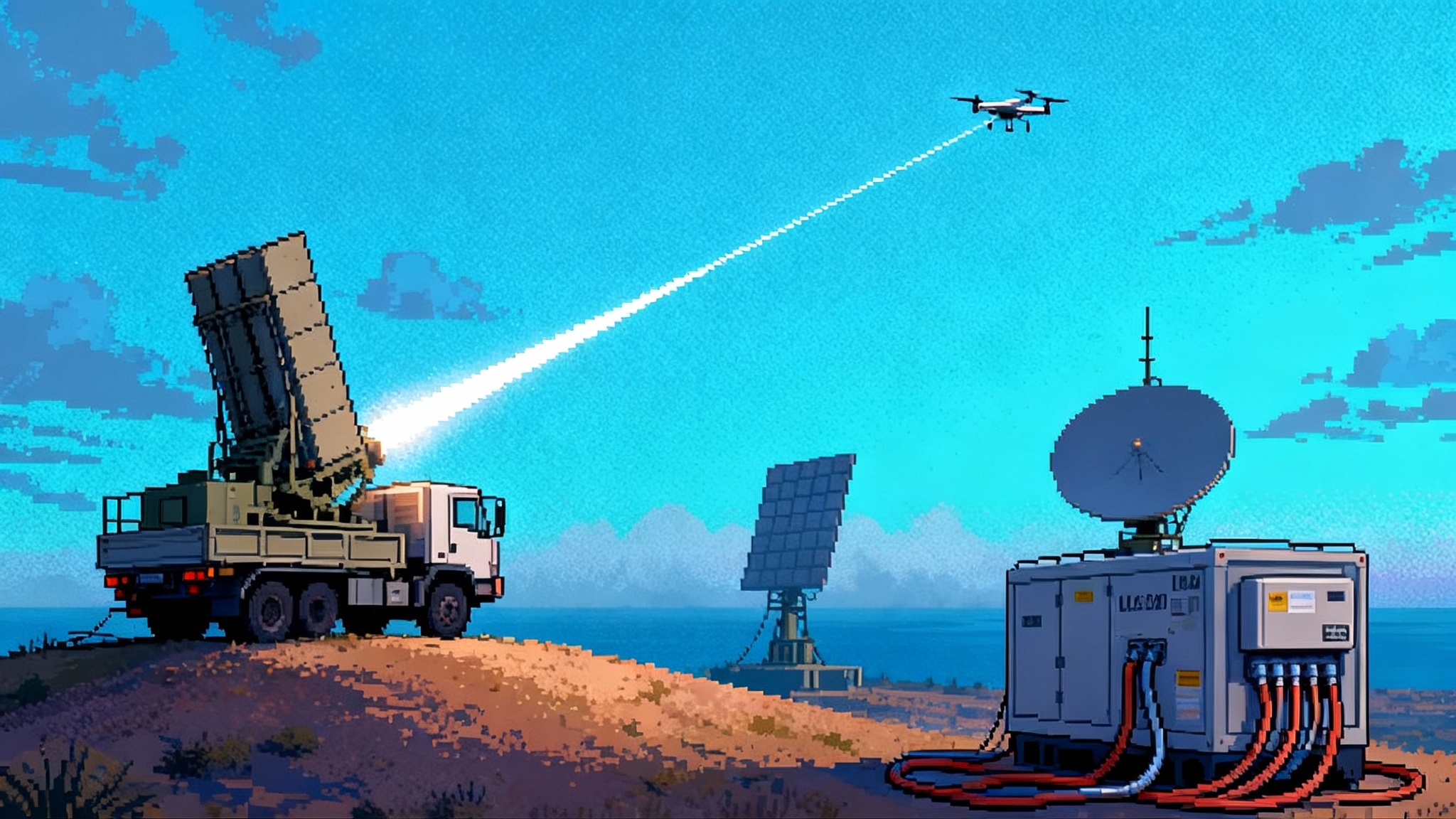USAF’s first uncrewed fighters cross into combat reality
YFQ-42A’s first flight and official fighter-series designations mark the moment CCAs left the slide deck and entered combat reality. Here is how autonomy, jamming resilience, modular payloads, and budgets will reshape air dominance.

The moment CCA became real
For years, Collaborative Combat Aircraft lived mostly as slides and simulations. That changed in two beats this year. First, the Air Force officially designated YFQ-42A and YFQ-44A on March 3, signaling that CCAs had crossed from technology demos into a fighter-series program of record. Then, on August 27, General Atomics Aeronautical Systems’ YFQ-42A flew for the first time, kicking off flight test and turning the CCA idea into an actual jet leaving the runway, as confirmed by GA-ASI’s first flight on Aug. 27.
The designations matter because the Air Force reserves the fighter series for aircraft expected to fight and survive in contested airspace. The first flight matters because it begins the hard work of proving reliability, autonomy, and weapons integration under real conditions. Together they mark the pivot from concept to combat reality.
This piece breaks down how CCAs will change air dominance, how the two winning teams are approaching the problem, what could go wrong between now and the production decisions the service wants to begin in fiscal 2026, and how allies might plug into the ecosystem, especially in the Indo-Pacific.
Human on the loop, not on every trigger pull
CCA is built around a simple shift. Instead of a pilot commanding every move, a pilot becomes a mission lead who sets intent and constraints, then supervises a formation of uncrewed fighters that execute within those bounds. In practical terms, that means:
- A human sets goals and no-go lines, like defend a corridor, hold fire unless targeted, or prioritize jamming over weapons use.
- The aircraft use onboard autonomy to route, sense, classify, and coordinate.
- They escalate to the human for authorization at key points that rules of engagement require, particularly for weapons release against ambiguous targets.
Expect four modes of control to coexist: fully autonomous maneuvering within commander’s intent, consent to engage for high-consequence shots, teleoperation for rare edge cases, and scripted behaviors when communications are degraded. The legal and ethical line will remain clear. Humans will retain meaningful control over the use of force, but they will not joystick every turn. The goal is to let human judgment focus on decisions that matter while letting autonomy handle speed, geometry, and electronic warfare timing in ways no single pilot can.
A big unlock here is the ability to pre-brief autonomy. Crews will load mission packages like any other weapon system: rule sets, maps, engagement constraints, and communications plans. When the spectrum gets hostile, the CCAs keep executing the brief rather than waiting for permission across a jammed link.
Fighting through jamming and cut comms
If CCAs fall apart when the datalink gets noisy, the concept fails. The architecture therefore assumes the spectrum is contested. Expect several layers of resilience:
- Multiple transports, not one pipe. CCAs will blend Link 16, directional line-of-sight links, low probability of intercept waveforms, and opportunistic mesh networking among aircraft. Some missions will add satcom or airborne relay nodes to bridge long distances.
- Emissions discipline. The formation will minimize talk when it can. Pre-briefed tactics and onboard coordination let jets stay radio-silent until a critical moment.
- Autonomy as a comms hedge. If the link drops, aircraft revert to the mission plan and local teaming behaviors, then re-synchronize when connectivity returns.
- Sensor fusion at the edge. Rather than streaming raw feeds, CCAs will share tracks and intent cues to keep bandwidth low and reduce the electronic signature.
This mirrors broader DoD moves toward distributed networking, as seen in the Pentagon’s LEO constellation push. For background on resilient links, see our explainer on LEO mesh networking.
Payloads and missions as Lego bricks
The Air Force’s bet is that CCAs can morph by swapping payloads faster than crewed fighters can cycle through deep modifications. Open-architecture hardware and software let a single airframe pivot across missions by changing what it carries and what code it runs. Day-one combinations could include:
- Air-to-air escort with medium-range missiles, a compact IRST, and a radar tuned for low-probability-of-intercept modes.
- Stand-in jamming with high-power electronic attack payloads and expendable decoys to pull enemy sensors and missiles off the manned formation.
- Counter-air mines using racks of small, intelligent interceptors to complicate adversary air operations.
- Forward sensing with passive receivers, towed arrays, and data recorders that map enemy emissions for follow-on strikes.
A modular design is also a sustainment play. Swapping a pod is faster than depot-level surgery, and moving a mission kit from one airframe to another keeps availability high while a specific jet is down for maintenance.
For how electronic warfare mass changes the fight, see our look at the new electronic warfare era.
Cost per effect, not cost per tail
A CCA will never match the raw survivability and multirole flexibility of a modern crewed fighter. It does not have to. The metric that matters is cost per effect. How much does it cost to achieve a concrete outcome, like keeping a bomber corridor open against a dense surface-to-air threat or denying airspace to enemy tankers for six hours?
CCAs attack this equation in several ways:
- Lower flyaway price relative to a crewed fighter, even if still in the low tens of millions.
- Smaller crews to train and sustain, with a single pilot leading several uncrewed wingmen.
- Higher risk tolerance at the edge of the fight to create openings for the manned package without betting an entire pilot and jet.
- Software-driven upgrades that raise capability without full airframe redesigns.
Imagine a pop-up enemy strike package supported by jammers. Today, you might surge two F-35s into that interference. With CCAs, a single F-35 can lead three or four uncrewed wingmen. The CCAs sprint forward in silent mode to bracket the jammers, one emits to draw fire, the others get missile shots. If a CCA is lost but the corridor stays open, the cost per effect may still beat two manned jets burning hours, range, and risk.
This logic rhymes with the Pentagon’s attritable mass push. For the procurement angle, see how the attritable drone surge is unfolding.
Two paths to mass: GA-ASI and Anduril
Increment 1 has two winners because the Air Force wanted competing philosophies.
- General Atomics Aeronautical Systems is following a continuity path. The company’s decades of uncrewed combat aviation show in the YFQ-42A’s production-representative approach, heavy use of proven subsystems, and a test program that looks like a traditional fighter development effort. Expect a steady march through flight sciences, envelope expansion, reliability growth, then weapons and teaming.
- Anduril arrived by a different route, emphasizing modular structure, distributed manufacturing, and rapid build cycles. The company’s core is autonomy software and mission command tooling, with promises to push updates at software velocity and instrument every aircraft for telemetry-rich learning. The payoff is potential speed and cost-down; the risk is scaling aerospace-grade hardware output and locking down safety cases for autonomous behaviors.
The Air Force benefits from this diversity. One path de-risks production and test with mature aerospace discipline. The other path pressures cycle time and software agility. In a perfect world, production choices harvest the best of both while preserving competition.
The news hook: first flight and what it unlocks
First flights are symbolic, but they unlock concrete things. Engines and inlets get real data across angle of attack and Mach. Sensors see real clutter and jamming. Autonomy sees edge cases that simulators miss. GA-ASI’s program has now reached that stage with its late August event. Expect envelope expansion to consume the next few months, followed by increasingly complex formation work with crewed aircraft and surrogates.
Anduril’s air vehicle has been moving through ground test and integration. When it flies, the interesting comparisons will not be max speed or ceiling but how fast each team racks up safe flight hours, how often they push autonomy builds, and how quickly they close the loop from flight data to code changes. That is where a software-centric program can build a compounding advantage.
Budget, schedule, and the FY26 decision window
The Air Force wants to begin production decisions for Increment 1 in fiscal 2026. That is ambitious but achievable if a few risks break right.
- Flight-test learning curve. Both teams need a clean envelope build and early reliability growth. A flurry of off-nominal events will eat schedule margin fast.
- Autonomy verification. The service needs repeatable, auditable evidence that autonomy behaves as designed across messy conditions, not just in perfect weather or clean RF environments. That means lots of sorties, robust safety cases, and conservative rules for weapons employment early on.
- Engine and sensor supply chains. Several critical components have long lead times and limited vendor bases. Any hiccups here will ripple into production.
- Range time and spectrum. Test ranges are congested and electronic attack is not trivial to schedule. Deconflicting this with other high-priority programs will be hard.
- Budget turbulence. FY26 toplines are tighter than the service would like. If the money gets squeezed, choices could include a smaller first lot, a split buy to preserve competition, or deferring some mission kits.
One reasonable path is a measured ramp. Approve a small first production lot in FY26 to keep momentum, then accelerate quantities in FY27 once test data is richer. A split buy would keep two lines warm and guard against single-vendor risk, at the cost of complexity in training and sustainment. A single-vendor award might wring out unit costs faster but concentrates risk.
Expect the Air Force to pair production with an operational unit that can write tactics in parallel. Giving that unit enough jets to do meaningful work will be as important as any paper milestone.
ROE in practice: what will crews actually do
Rules of engagement are not a footnote. They define how far autonomy can run before a human must weigh in. Early CCAs will likely adopt conservative defaults:
- Hard blocks on target classes that require positive identification.
- Human consent for weapon release in mixed civilian airspace or when track confidence is below a threshold.
- Pre-cleared strikes against hostile emitters or incoming weapons when time to impact is short and the human cannot respond in time.
Operationally, pilots will spend more time on intent and deconfliction than on flying. Ground crews will shift toward validating software loads, managing data capture, and analyzing mission tapes to refine tactics. Squadron training will look as much like mission command and data engineering as traditional stick-and-rudder time.
Industrial base: the pivot to software-centric production
CCA is a forcing function for a new defense manufacturing pattern. The hard problems are less about wings and more about code, integration, test automation, and assurance. The winning factories will be the ones that:
- Treat aircraft as software platforms with tight MLOps and DevSecOps pipelines.
- Use digital twins and hardware-in-the-loop rigs to burn down risk before flight.
- Instrument every sortie to feed learning systems, then push frequent updates backed by safety cases.
- Modularize hardware so payload makers can innovate without waiting for an airframe refresh.
This is not just a technical shift. It changes contracting and oversight. Fixed baselines and multi-year freezes are the enemy of software learning. The Air Force will need acquisition lanes that authorize frequent software drops while preserving safety and cyber rigor. Primes will need to open interfaces enough for third-party payloads without ceding integrator control. Done right, the result is compounding capability without compounding cost.
Exports and allied interoperability in the Indo-Pacific
Allies will want in, and the theater most likely to drive demand is the Indo-Pacific. The geography favors long-range teams, dispersed bases, and the ability to flood the battlespace with sensing and decoys. Expect a few themes to shape export and interop:
- Open mission systems and common datalinks. Link 16 will remain a baseline, with gateways to national networks and stealth-friendly links for F-35 partners. Interoperable autonomy APIs will matter as much as radios.
- Sovereign software. Allies will seek the ability to run their own autonomy behaviors and mission apps, audited by the United States but not controlled by it. That is both a technical and policy challenge.
- Tailored payloads. Some countries will prioritize electronic warfare and sensing. Others will want air-to-air weapons. Modular kits make both possible without unique airframes.
- Export releasability. Expect initial exports to close partners with F-35 fleets and strong cyber discipline. Australia and Japan are obvious candidates, with others like the UK and certain European air forces following.
A successful export model will mirror the best of F-35’s global sustainment while allowing faster, nation-specific software evolution. The payoff is a larger ecosystem, more flight hours to learn from, and a coalition capability that is harder to counter than any single national program.
What to watch next
- Flight test cadence. The useful metric is safe hours per month, not press releases.
- Weapons separation and live fire. Nothing says fighter like clean weapon events under realistic loads and g.
- Teaming runs with crewed aircraft. Look for surrogate missions where CCAs scout, jam, and bracket while a crewed jet manages the fight.
- Autonomy update tempo. How many software drops per quarter make it to flight after safety review.
- Production line readiness. Tooling, suppliers, and quality systems are where ambitious schedules go to slip.
- Training units. Standing up a squadron that writes tactics and wrings out maintenance is the best indicator that the Air Force intends to buy in volume.
The bottom line
By giving CCAs fighter-series designations and flying the first air vehicle, the Air Force has crossed the psychological gulf between concept and combat. The remaining work is gritty and unglamorous: burn down flight-test risk, keep autonomy safe and explainable, harden the links, and prove that modules and software drops really can change a jet’s role in days instead of years. If the service can protect funding through FY26 and avoid a perfection trap for autonomy, it will field a formation that shifts the cost curve and multiplies the effectiveness of every human pilot in the fight. That is what air dominance will look like in the 2030s. CCAs are how you get there, starting now.








